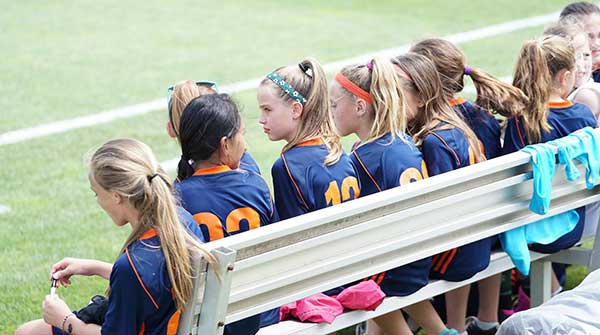Researchers have identified several factors that influence how parents make their decisions
Parents play a huge role when it comes to children’s participation in any kind of sport. They do everything from driving their children to practices and games to ensuring they’re well fuelled and have the proper gear.
The realities of many overflowing modern schedules mean parents must also make tough decisions about which sports their child will participate in.

Heather Larson
“The decisions that parents make about the number of sports to put their kids in, which sports and at what ages, it can really influence their children’s trajectories in sport and future physical activity,” explains Heather Larson, an assistant adjunct professor in the Faculty of Kinesiology, Sport, and Recreation at the University of Alberta.
Though we know that these decisions greatly impact children, we know very little about sport-centric parental decision-making. Larson is first author of a recent study that surveyed a particular group of experts in an effort to fill that knowledge gap.
Identifying some factors that influence parents’ decision-making can help create more effective policies and recommendations.
 Photo by Jeffrey F Lin |
| Related Stories |
| We need to get children off the couch
|
| Pickleball is taking over the world
|
| Beware the psychological risks for kids in youth sports
|
“If parents are being influenced by broader sport policies, if they’re being influenced by recommendations in a negative way, maybe those recommendations need to be rewritten,” she says. As an example, she cites Sport for Life’s Long-Term Development framework.
It could also be beneficial for other entities involved in youth sports, Larson adds.
“If there are things that clubs can do differently or coaches can do differently to support participation in multiple sports or just take away some of that stress, that again gives us something to target for improving the youth sport system.”
Larson and her collaborators selected a specific group to survey – scholars with doctorates in sport-related disciplines who also had one or more children between the ages of eight and 15 currently involved in organized, competitive sport.
“They [the survey participants] have this really solid knowledge base of sport policy and the evidence around best practices in youth sport, so they’re viewing things through that lens. But then they’ve also got that personal experience,” says Larson. “It’s that intersection that gives them this unique viewpoint.”
The survey responses indicated that despite participants’ expertise in best practices, that’s not what drove their decision-making.
“They were not overly concerned with adhering tightly to recommendations at all,” says Larson. “They took a much more flexible and holistic approach, thinking about all of the factors within their family, and also thinking about their children’s specific characteristics and specific needs.”
The researchers identified several influencing factors that shaped parents’ decisions, including their own sport backgrounds and beliefs about sport, their child’s preferences and personal characteristics and their child’s competence at a particular sport. Practical considerations such as financial cost and scheduling challenges were also considered.
Most survey participants encouraged their children to sample a variety of sports, although Larson notes that doesn’t necessarily mean multiple organized sports. It could mean enrolling a child in an organized soccer team and then prioritizing family hiking and skiing outings or supplementing a primary organized sport with shorter summer camps focused on other sports or types of movement.
Another factor was being able to evaluate and modify the sporting environment to suit their child’s needs. For example, some parents chose to pause or delay a child’s involvement in a program until they were a certain age or size.
Many participants reported regularly checking in with their child to confirm they were still enjoying a particular sport or to address any changes in the child’s behaviour or issues they noticed.
Larson says there’s room for improvement in youth sports in terms of policies. For example, many sport policies and recommendations seem to presume a family has two parents with two cars and one child in one sport, failing to consider the challenges that having multiple children in various sports can pose to families.
There really is no one-size-fits-all recommendation – every family is unique. While there are certain common influencing factors, parents need to consider the specifics of their situation when making decisions.
“I really want parents to feel empowered to make decisions that work best for their whole family,” says Larson.
“What’s really important is that their kids feel like they want to be in their sport, they feel like they’re gaining competence, they’re getting better at it, and that they have positive relationships with their teammates and coaches.”
| By Adrianna MacPherson
Adrianna MacPherson is a reporter with the University of Alberta’s Folio online magazine. The University of Alberta is a Troy Media Editorial Content Provider Partner.
The opinions expressed by our columnists and contributors are theirs alone and do not inherently or expressly reflect the views of our publication.
© Troy Media
Troy Media is an editorial content provider to media outlets and its own hosted community news outlets across Canada.

